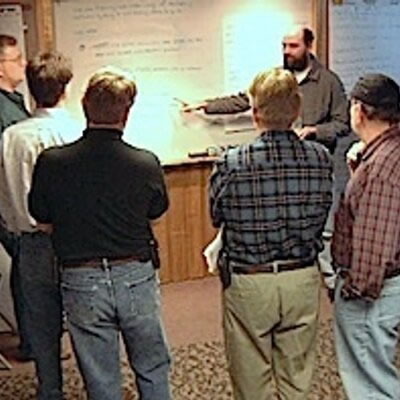Tonight’s meetup

The most signed-up for gathering in the Tampa Bay tech scene tonight (60 sign-ups so far, Yours Truly included) is the special joint meetup for Women Who Code Tampa and Tampa Bay Agile, “All About Agile”, in which attendees will get an overview of “agile”, the popular shorthand for the practice known as agile software development.
Tonight’s meetup, which takes place at AgileThought’s offices (2502 North Rocky Point Drive, Tampa), will provide the answers to these questions:
- What is agile? What is not agile?
- How might agile change your job?
- How might agile change your career?
Tonight’s speakers are:
- Julee Bellomo: A consultant with AgileThought’s agile practice who specializes in product and portfolio management and product discovery workshops and help businesses prepare for agile transformations through leadership and enterprise coaching. She founded the Tampa Bay Product Owner group, and recently collaborated on the book Lean Agile Marketing: How to Become Agile and Deliver Marketing Success.
- Wendy Vigre: An agile coach at AgileThought with a software engineering background who has led a wide variety of initiatives that vary from technical in nature, like code decoupling, to very business logic-driven, like state legislation. Her hands-on field experience includes product owner, scrum master, Kanban flow master and agile coach. She has worked in industries that range from healthcare to large accounting firms with teams that span from clinical to compliance.
Your handy pre-meetup briefing
You’ll probably get a quick summary of the event pictured in this photo:

NEEEEEERRRRRRRDS!
That was taken sometime between February 11 and 13, 2001 at Snowbird Ski Resort in Utah, where 17 leading software development and engineering experts got together to hang out, ski, relax, and — because they were big ol’ capital-N Nerds — talk about what was wrong with the state of software development.
All of them were proponents of different methodologies that went by different names: extreme programming, Scrum, Crystal, Pragmatic Programming, and so on, but beneath all those different ways of building software was a common thread: addressing a need to get out from under heavyweight software development processes that crushed projects under bureaucracy and documentation, and which ultimately delivered applications that failed to meet customer and user needs.
What came out of that gathering became known as the Agile Manifesto, which lists these values:
| They value this: | Over this: |
| Individuals and interactions | Processes and tools |
| Working software | Comprehensive documentation |
| Customer collaboration | Contract negotiation |
| Responding to change | Following a plan |
They also wrote: “while there is value in the items on the right, we value the items on the left more.”
The Agile Manifesto has 12 principles:
- Our highest priority is to satisfy the customer through early and continuous delivery of valuable software.
- Welcome changing requirements, even late in development. Agile processes harness change for the customer’s competitive advantage.
- Deliver working software frequently, from a couple of weeks to a couple of months, with a preference to the shorter timescale.
- Business people and developers must work together daily throughout the project.
- Build projects around motivated individuals. Give them the environment and support they need, and trust them to get the job done.
- The most efficient and effective method of conveying information to and within a development team is face-to-face conversation.
- Working software is the primary measure of progress.
- Agile processes promote sustainable development. The sponsors, developers, and users should be able to maintain a constant pace indefinitely.
- Continuous attention to technical excellence and good design enhances agility.
- Simplicity–the art of maximizing the amount of work not done–is essential.
- The best architectures, requirements, and designs emerge from self-organizing teams.
- At regular intervals, the team reflects on how to become more effective, then tunes and adjusts its behavior accordingly.
And finally, if you have 8 minutes to spare, give this video a watch — it’s a brief explanation of agile in action:
One reply on “Tonight: “All About Agile” at the Women Who Code Tampa / Tampa Bay Agile Meetup”
Shoot! Can’t make it tonight. Hopefully you folks can help spread the word about DevFest Florida? 20% off early bird tickets over at https://devfestflorida.eventbrite.com?discount=SUNCOAST-GDG